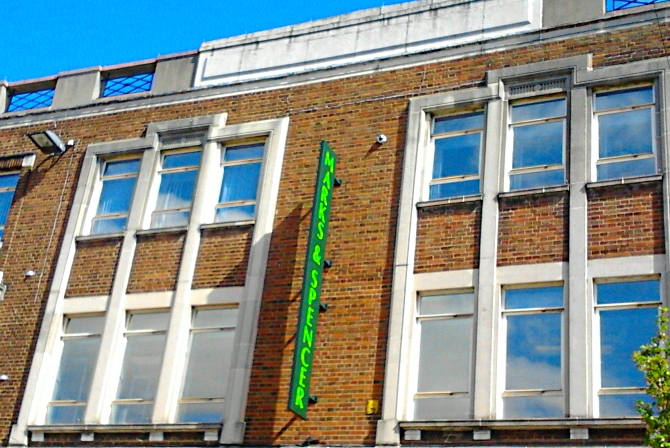Competition on the high street has become increasingly intense leading to many brands offering numerous promotions in order to win back customers from rivals. Unfortunately, while this has seen brands such as Next and River Island thrive, others such as Marks & Spencer continue to struggle.

The retailer has announced a third consecutive annual profits fall, with the 3.9 per cent drop resulting in an underlying annual profit of £623 million. This was largely due to a 1.4 per cent fall in like for like general merchandise sales in the year to the 29th of March, as UK food sales rose by 1.7 per cent – again, making food the strongest performing category in the retailer’s range.
Yet while the drop in profits is a disappointment for a brand keen to reverse its poor fortunes, the annual report did contain some positive factors. The major one was annual group sales, which rose by 2.7 per cent to £10.3 billion and marked one of the retailer’s strongest results in recent years.
Marks and Spencer chief executive Marc Bolland claimed that the retailer had made “solid progress” in the last financial year, and believes that the large-scale investments into commercial property growth are yet to be seen on a real level.
He said; “General merchandise is not yet satisfactory, but a lot of the heavy lifting has been done.
“We are focused on improving our performance in general merchandise and were pleased to see early signs of improvement.
“Our food business had a very strong year, consistently outperforming the market.”
While it seems that progress has certainly been made in terms of UK like for like sales, the publication of the annual results confirmed analysts’ expectations that Marks & Spencer would be overtaken by close rival Next on an annual profits basis for the first time in history. Furthermore, this set of results marks the conclusion of Mr Bolland’s three year rejuvenation plan, which has so far cost around £2.3 billion but has failed to have a positive impact upon profits.
Under the plan, the womenswear departments within the retailer’s top performing 70 stores have been refreshed, a network of food stores have opened in Paris and a new distribution centre has been erected in the Midlands to streamline Marks & Spencer’s multi-channel offering. Mr Bolland also poured £150 million into the revamp of the company’s website – something which the board warned “will have some impact on general merchandise performance in the first quarter.”
Yet despite this seemingly negative situation, Mr Bolland remains committed to his initial plan and now intends to focus on the “delivery” aspect.
He says; “Three years ago, we recognised the scale of investment required to transform our business, investing to strengthen our foundations and improve our customer offer.
“We are making solid progress on this journey and are now focused on delivery.”
With online sales increasing by 23 per cent, it seems that the multi-channel investment at least may bear fruit in the future. However, unless general merchandise sales can be revived somewhat, Marks & Spencer could be stuck in the retailing doldrums for some time to come.
What steps do you think Marks & Spencer could take to strongly compete with Next?
Previous Post
Birmingham Assay Office sold to Dutch Developer